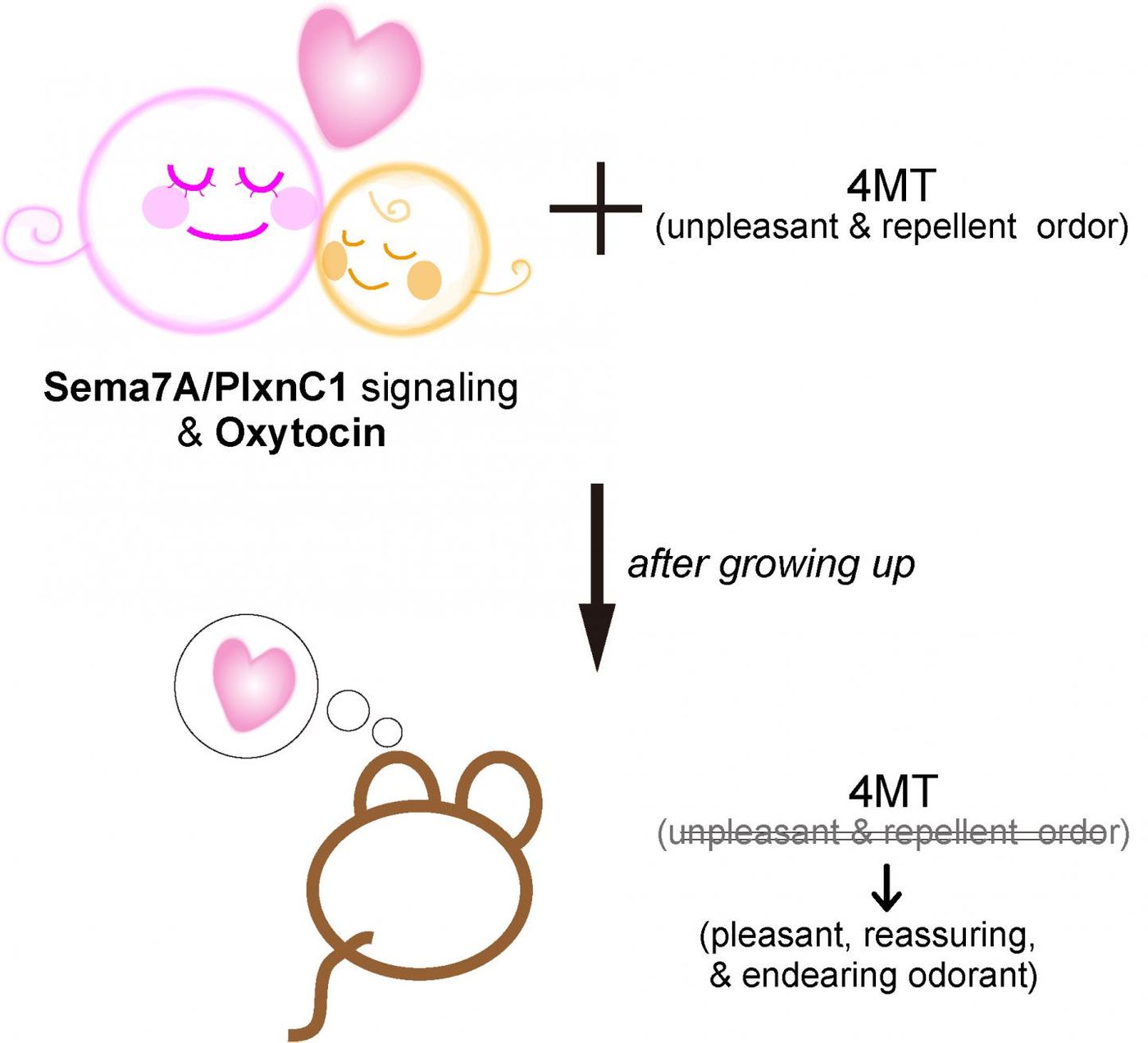The Smell of Home: Insights Into Scent Imprinting
Right after birth, young animals go through a period in which they 'imprint' or fixate on sights and smells that they're exposed to. For example, ducklings will imprint on their mother duck, or migratory fish will remember the odors they were exposed to when young so they can return to their home rivers to spawn as adults. While we know a bit about visual imprinting, scientists are now learning more about the molecules and cellular connections that make scent or olfactory imprinting possible. Their findings have been reported in eLife.
"We discovered three molecules involved in this process," said study co-author Dr. Hirofumi Nishizumi of the University of Fukui. "Semaphorin 7A (Sema7A), a signaling molecule produced in olfactory sensory neurons, Plexin C1 (PlxnC1), a receptor for Sema7A expressed in the dendrites of mitral/tufted cells, and oxytocin, a brain peptide known as [the] love hormone."
This study used a mouse model. When newborn pups were exposed to a certain odor, the researchers found that Sema7A signals to its receptor, PlxnC1, which triggers the imprinting response to the odor. Neurons only express the PxnC1 receptor in a certain place in the cell, the dendrites, during the first week of life, setting limits on the pathway. Oxytocin, which is released in infants that nurse, enhances the positive stimulation from the odor memory.
Previous studies have shown that male mice are typically very curious about unknown mouse scents, regardless of whether the source is male or female. But if Sema7A signaling is blocked during that first week of their life, the male mice don't display that curiosity; they begin to avoid strange scents.
The researchers suggested that if pups are exposed to an offensive odor during the critical period, that odor ceases to be offensive, and it will imprint and become an odor that induces a positive response; the natural response is disregarded. A hard-wired neural circuit thus would seem to be in competition with an imprinted memory circuit, with imprinting winning out.
It remains to be seen whether humans have similar circuits that function in the same way, but it's possible we do. Human brains may also have similar 'competitions' between neural circuits when decisions are being made.
The researchers also suggested that the wrong sensory inputs might influence neurodevelopment disorders, like autism spectrum disorders (ASD). Oxytocin is a common ASD treatment for adults. But it may be more effective if given to younger patients.
"Our study indicates that oxytocin treatment in early neonates is more effective than after the critical period in improving the impairment of social behavior. Thus, oxytocin treatment of infants will be helpful in preventing the ASD and AD, which may open a new therapeutic procedure for neurodevelopmental disorders," explained Nishizumi said.
Sources: AAAS/Eurekalert! via University of Fukui, eLife










